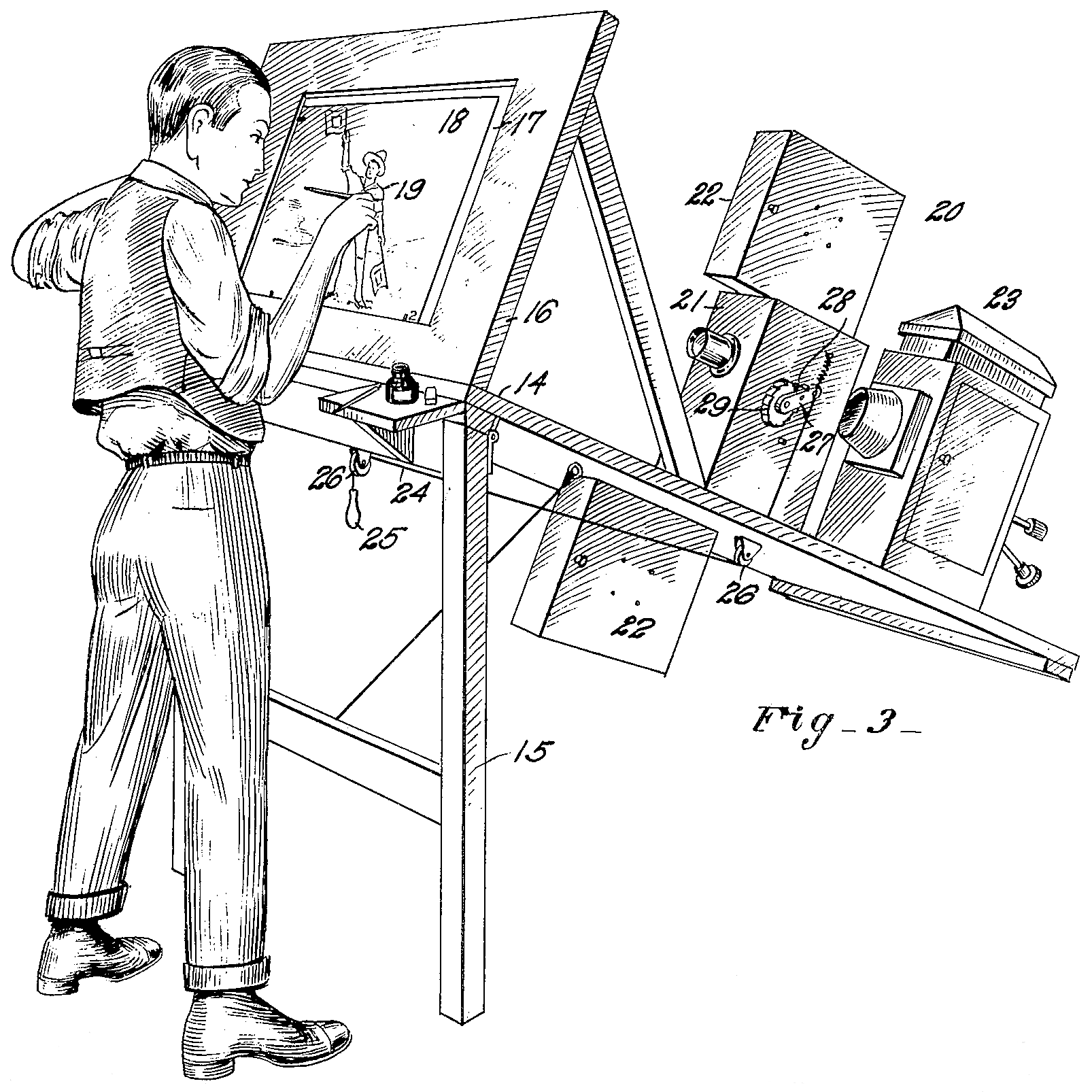Research Blog: Rotoscoping

Figure 1: Rotoscoping mechanism: https://en.wikipedia.org/wiki/Rotoscoping
Rotoscoping is the animation process where the animator traces over live-action footage frame by frame. Traditionally done by projecting film onto a glass panel and then tracing, the process is largely done nowadays using computers, and has been utilised to remove objects from live-action films. Rotoscoping is one of the easier animation processes and has been used to give the animators a guide to work off of. The process has its roots in the late 1800s, and was utilised by Max Fleischer to give his animations more fluid movement as opposed to the more unrealistic movement that had been demonstrated earlier. This was a revolutionary movement in animated cinema.
The first full-length film from Walt Disney, "Snow White and the Seven Dwarfs (1937)" heavily utilised rotoscoping as real-life actors were heavily used as references to draw over, and the technique would continue to be used in Pinocchio (1940) and Alice in Wonderland (1951). Later on, the technique was used in live-action films, including Alfred Hitchcock's The Birds (1963) and Mary Poppins (1964).
In the 1990s, the technique was upgraded through the work of animator Bob Sabiston, who invented the technique known as "interpolated rotoscoping" which allowed animators to rotoscope footage with the aid of a computer. This led to the creation of the computer program Rotoshop, which copies a traced figure and applies its forms to other movements in the scanned footage, saving animators time. Rotoshop was first utilised in Richard Linklater's "Waking Life" (2001), and it was vital to conveying the unrealistic nature of the story. Linklater would utilise rotoscoping again to produce "A Scanner Darkly" (2006) and "Apollo 10 1/2: A Space Age Childhood".
The otherworldly qualities provided by rotoscoping have been recently utilised by the Amazon original series "Undone", which is compulsory to convey the mood of the setting as well as the themes presented. Even the series looks fully realistic, the viewer can still tell that it is not real. The filming process involved creating layouts of the in-animation sets, since the live-action footage is shot in a green screen studio. The film was shot in co-ordination with the floor plans and the layouts, and the actual environments (as in living rooms and film locations) would be added during the animation process, so the actors had to be able to act in the environment without being able to fully see it. The rotoscoping was pieced together in multiple locations: traced and inked in Texas and then painted in Amsterdam. The film itself was painted with oil paints to give the backgrounds a more rustic, imperfect quality.
Rotoscoping is essential for the improvement of visual effects allowing for more life-like movement. The technique will be used in my film to create a template for the life animations that I will use to connote the mood of my main protagonist. The film will partly inspired by A Scanner Darkly and how that film used rotoscoping to connect itself to reality whilst not being in reality.
Bedard, M., 2020. Rotoscoping: The Perfect Marriage of Live-Action with Animation.
[online] StudioBinder. Available at:
<https://www.studiobinder.com/blog/what-is-rotoscope-animation-definition/>
[Accessed 6 October 2022].

No comments:
Post a Comment